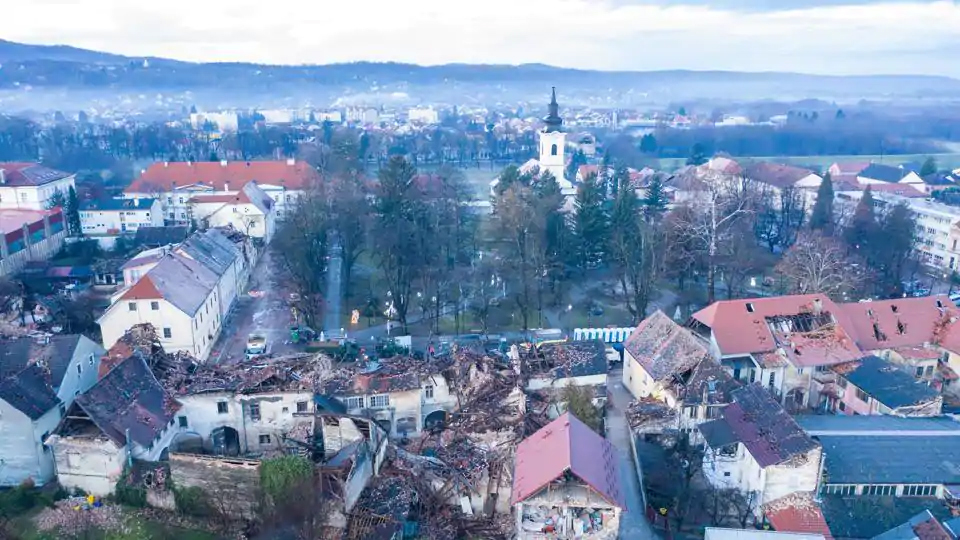Rescuers raced to search for survivors amid strong aftershocks after Croatia’s worst earthquake in 140 years killed seven people and devastated cities and towns in one of the nation’s poorest regions.
The 6.3-magnitude tremor on Tuesday damaged most of the buildings near its epicenter in Petrinja, a town of 25,000 people, rendering them unusable and their inhabitants homeless, authorities said.
The victims included a 13-year-old girl and a father and son who died together. Twenty-six people were injured, Prime Minister Andrej Plenkovic said.
The temblor, which rattled Europeans as far away as Rome and Vienna, was more powerful than both a 5.2 quake on Monday and a similar-sized tremor that caused $6 billion in damage when it hit the capital of Zagreb in March.
Aftershocks, including two measuring 4.8 and 4.6, hit the area before dawn on Wednesday, according to the European-Mediterranean Seismological Centre.
“This morning we were hit by the third, if not the fourth earthquake,” Petrinja Mayor Darinko Dumbovic said on state TV’s Good Morning show. “Everything that has not yet fallen is falling from the ruins of Petrinja.”
The disaster adds to an already difficult year for the Adriatic European Union member state, which is still busy repairing the 20,000 buildings damaged during the March quake while also tackling one of the bloc’s worst surges in coronavirus cases and a record economic recession.
Plenkovic vowed the government will repair the damage, the extent of which hasn’t been estimated yet. While the government abolished a virus-triggered ban on movement between counties so those whose homes were destroyed could stay with relatives, he urged people to continue following social-distancing guidelines.
“We are appealing to people to stick to epidemiological measures,” Plenkovic told reporters. “We still have a problem with the coronavirus pandemic.”
Authorities evacuated the damaged hospital in the nearby city of Sisak, the region’s largest, taking patients to Zagreb. Buildings were also damaged in the capital, about 50-kilometers away.War Damage
Petrinja was demolished in the 1991-1995 war for independence from former Yugoslavia. The damage on Tuesday resulted in collapsed facades and caved-in roofs that resembled the damage from the war, as many citizens spent the night by open fires outside.
The US Geological Survey said the temblor was the nation’s strongest since the advent of modern seismic instrumentation, which began to gain prevalence in the 1880s.
The government set aside an initial 120 million kuna ($19.4 million) in relief funds, Plenkovic said. Both Hungary and Slovenia said they were sending support, while Janez Lenarcic, the EU’s commissioner for disaster relief, will arrive in Croatia on Wednesday. He said the bloc was sending help today including winter tents, electric heaters, sleeping bags, and pre-made housing.


